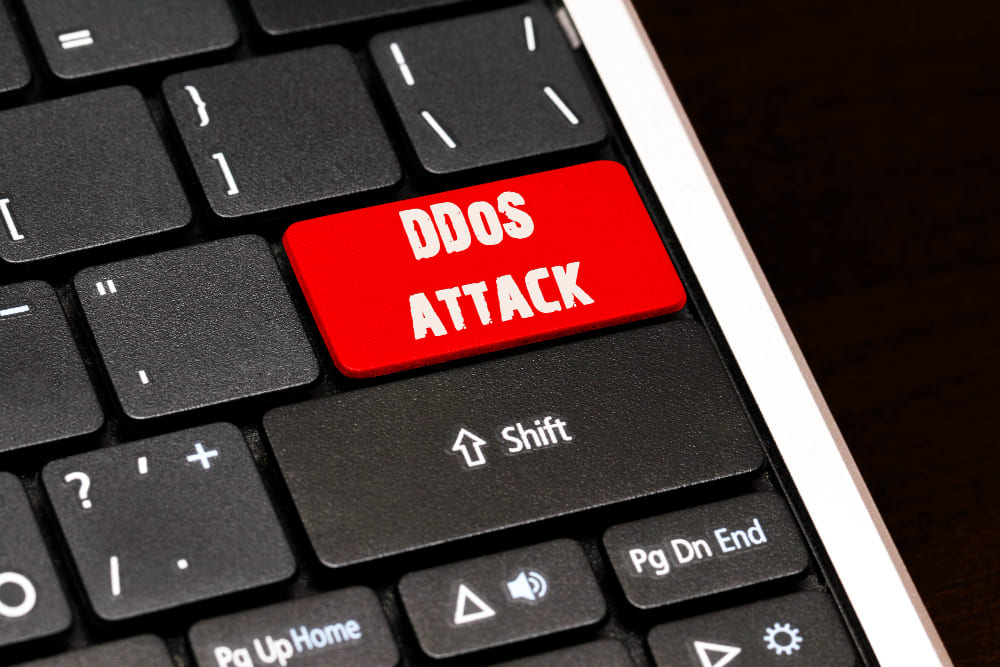Data breaches are every company’s long-time enemy—they wreck your brand and revenue. Records disclosed at least a thousand data breach cases in 2023 alone. This number shows that this cyberattack is still a vile threat you need to be aware of, especially with various types of data breaches.
In this guide, we will walk you through the definition of a data breach, how it occurs, and the types of data breaches. Want to safeguard your company’s precious data? Read on!
What is a Data Breach?

A data breach is a critical security event where private or sensitive information is accessed without authorization to be compromised. In many cases, the attacker will threaten to sell the data if a certain amount of money is unpaid.
However, a data breach case doesn’t always occur due to malicious attacker intent. Sometimes, human errors can also be the reason why it happen.
The exposed information might range from personal to corporate data, including:
- Social Security Numbers (SSNs)
- Credit and Debit Card Information
- Customer Databases
- Employee Information
- Intellectual Property (IP)
- Financial Records
- Legal Documents
- Network and Security Credentials
- Trade Secrets and Research Data
Various methods, such as hacking, phishing, ransomware attacks, or even physical theft, can lead to data breaches.
For organizations, the impact extends to tarnished reputations, eroded customer trust, and substantial financial penalties, including legal actions and regulatory fines.
IBM’s research highlights the significant financial implications, with the global average cost of a data breach in 2023 reaching a staggering USD 4.45 million.
How Do Data Breaches Happen?

There are several factors causing data breaches, including human factors, malware, and physical cybersecurity.
The Human Factor
Believe it or not, human error remains the main factor causing data breaches in 2023, comprising 74% of the human element in the reported breaches. You might wonder, how could the number be so big. Well, it is humane to make mistakes—and these mistakes somehow lead to bigger problems.
Some common mistakes, whether in a personal or workplace, include:
- Using weak passwords
- Using personal devices for work
- Leaving devices or documents unattended
- Losing devices
- Sending data to the wrong recipient
- Sharing credentials or access codes
- Falling victim to social engineering
- Disposing of data improperly
Malware
Malware, or malicious software designed to harm or penetrate networks, is a major contributor to data breaches. It comes in numerous forms, including viruses, ransomware, and spyware.
It infiltrates networks using misleading connections, allowing hackers to steal, erase, or encrypt sensitive data. Malware’s impact ranges, including:
- Interrupting operations
- Stealing personal data
- Encrypting files
- Spying on user activities
These make strong cybersecurity measures critical in guarding against these sneaky, damaging attacks.
Physical Cybersecurity
Physical cybersecurity flaws can directly lead to data breaches, which are frequently the result of missed or underestimated risks. Unattended workstations accessible to unauthorized users, stolen laptops or mobile devices, and improperly disposed of hard drives carrying sensitive data are all examples. Even something as basic as leaving a server room unlocked might lead to complications.
These situations illustrate the importance of severe physical security measures like biometric access, secure device storage, and tight visitor regulations to keep data safe from real-world breaches.
Types of Data Breaches

There are several types of data breaches. Find out the differences below!
Ransomware
Ransomware is a well-known type of virus that locks a user out of their devices or encrypts their sensitive data before demanding payment to be unlocked. It’s a common technique of data breach, with many variants such as CryptoLocker, WannaCry, and Petya wreaking havoc.
Over 72% of organizations worldwide were hit by ransomware attacks in 2023, above what was observed in previous years.
Victims vary from individuals to huge companies, with the ransom causing not just money loss but also considerable data damage and operational interruption.
The insidious nature of ransomware emphasizes the crucial importance of regular backups, strong security protocols, and rapid response strategies.
Phishing
Phishing is a fraudulent strategy in which attackers pose as trustworthy entities to fool people into disclosing sensitive information, like login passwords or financial information, resulting in data breaches.
Common examples of phishing are:
- Email scams posing as trustworthy companies
- Spear-phishing aimed at specific individuals with personalized information
- SMS smishing
For phishing prevention, companies can do these steps:
- Regular employee training
- Email Filtering
- Multi-Factor Authentication (MFA)
- Regular system updates
- Incident response plan
- Phishing simulation
Password Guessing
Password guessing is a simple yet frighteningly effective data breach approach. They frequently use brute force attacks, which try several combinations until they find the correct one, or dictionary attacks, in which they use common passwords and phrases.
To avoid this type of data breach, ensure you have strong, unique passwords and do a regular password update.
Eavesdrop Attacks
Eavesdrop attacks, or snooping or sniffing, happen when attackers intercept and listen in on private communications—a silent but deadly data breach type. It typically happens for wireless communication.
These breaches frequently occur on insecure or inadequately secured networks, such as public Wi-Fi or unencrypted data, allowing attackers to intercept sensitive data sent between users.
Man-In-The-Middle Attack
Man-In-The-Middle (MITM) attacks involve an attacker who discreetly relays and maybe modifies communication between two parties that believe they are interacting directly.
Some common examples are email hijacking, session hijacking, HTTPS spoofing, Wi-Fi eavesdropping, and DNS spoofing. These attacks are employed to steal personal information, steal login credentials, corrupt data, or sabotage communication.
Distributed Denial of Service (DDoS Attack)
DDoS attacks commonly target bigger companies, often as a form of protest, as it requires a vast number of resources and a well-coordinated effort. Zayo reports that DDoS attacks across industries increased by 200% from 2022 to the first half of 2023.
This type of data breach simultaneously floods targets’ servers with traffic from multiple directions, making it impossible for employees to access the needed resources.
Recording Keystrokes
Also known as keylogging, recording keystrokes is a devious technique in which malicious software or hardware records every character typed by a user, whether or not it appears on screen, resulting in data breaches.
This strategy is useful for obtaining sensitive information involving passwords, credit card numbers, and personal messages. Its covert nature makes it a favorite weapon of hackers.
Frequently Asked Questions
What are the main causes of data breaches, and how can they be prevented?
All types of data breaches mainly stem from cyberattacks, human error, and physical insecurities and can be prevented through robust security measures, regular training, and vigilant system maintenance.
How do data breaches affect individuals and businesses in terms of reputation, privacy, and financial losses?
Data breaches can devastate individuals and businesses by tarnishing reputations, violating privacy, and incurring significant financial losses.
What are the legal and regulatory obligations for reporting and responding to data breaches?
Legal and regulatory obligations for all types of data breaches typically include timely notification to affected parties and authorities and implementing measures to mitigate and prevent future incidents.
Conclusion
Data breaches continued to be a formidable threat, compromising personal identities and corporate secrets through various methods.
This guide underscores the multifaceted nature of many types of data breaches and emphasizes the critical need for comprehensive security measures to protect sensitive data and maintain trust in our increasingly digital world.
If you need help regarding data security for your company, contact Fluxgate today!
